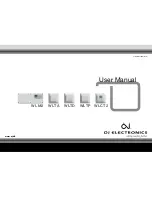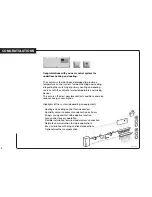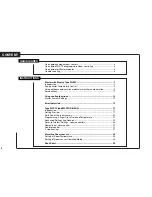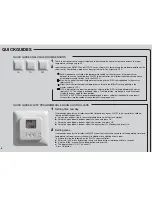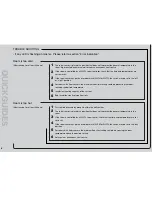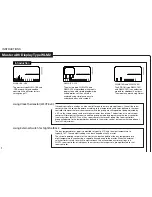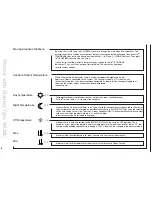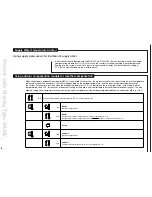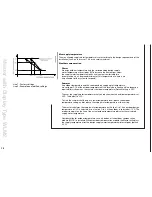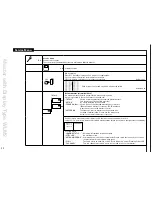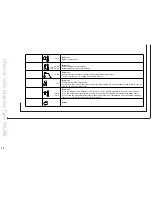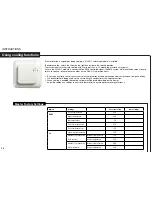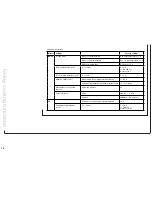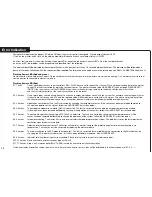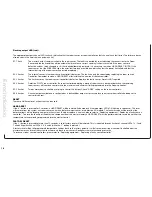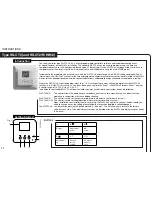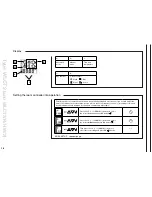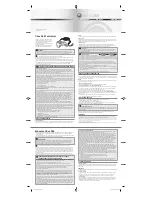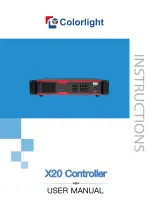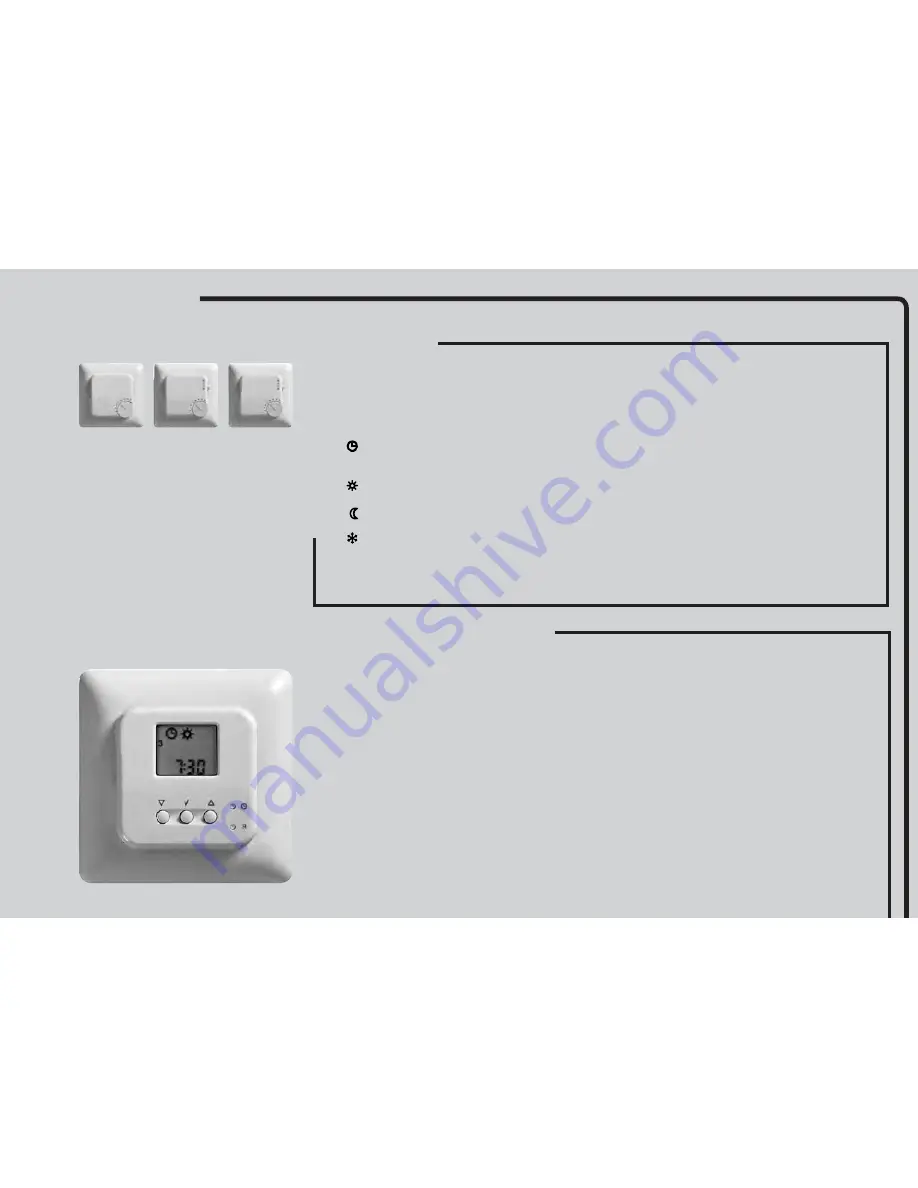
4
Limit Sensor
Thermostats with a limit sensor have a mechanical jumper on the
printed circuit board allowing the limitation to be set for MIN. or
MAX. temperature regulation. If set for MAX., it will have a
temperature setting of 27°C. Set for MIN., it has a setting of 17°C.
These temperature are fixed when used with masters WLM-1BA
or WLM-3BA unless the thermostat has been allocated to a zone
group controlled by a WLCT clock thermostat. In this case, the
limit settings can be increased or decreased by accessing the
clock thermostat. The limits then set will apply to all relevant
thermostats with limit sensors belonging to that group. If the
master WLM-1FS or WLM-3FS is used, the limit settings can be
changed through the programming buttons on the master.
Mounting of limitation sensor
Max. temperature limitation
is used to protect the floor area
from becoming too warm. This may be required if special floor
surfaces (real wood) are used. The sensor should be positioned
where it can read the true temperature of the floor and should
always be within the heated area.
Min. temperature limitation
is used to keep a floor surface
warm, irrespective of room temperature. For example, water on
tiled bathrooms or pool areas with dry more quickly if the floor
surface is kept warm. The sensor should be positioned where it
can read the true temperature of the floor and should always be
within the heated area.
For easy replacement we recommend that all floor sensors are
mounted in a tube which is placed between 2 heating pipes. The
inner end of the tube should be sealed, and the sensor cable
brought back to the wall edge. If required, the sensor cable can
be extended up to 50 m with standard installation cable.
Mounting of limit sensor type WLTD and WLCT
Jumper connected: max. limitation
Jumper removed : min. limitation
Location of jumper see fig. 5
WLTM-19: Use of external room sensor
A remote room sensor can be used instead of the built-in sensor by connecting the jumper across the two pin bridge on the printed circuit board under the
thermostat cover. From factory the jumper is "parked" on one pin. Location of jumper see fig. 5.
Jumper connected: External room sensor
Jumper removed: Built-in room sensor
OJ ELECTRONICS A/S
Stenager 13B · DK-6400 Sønderborg · Denmark
Tel +45 73 12 13 14 · Fax +45 73 12 13 13
oj@oj.dk · www.oj.dk
Setting of thermostat operating mode
Setting of Room Temperature
The master is supplied with default temperature settings which are used by all non clock thermostats that are connected to the system. In Master WLM-1BA
& WLM-3BA, the DAY temperature setting is fixed at 20°C and the NIGHT temperature is fixed at 15°C.
In Master WLM-1FS & WLM-3FS, the DAY, NIGHT and OFF default temperatures are adjustable through the display.
Automatic switching between DAY and NIGHT temperatures is done by either connecting a separate timing device to the master, or using a WLCT clock
thermostat and allocating other non clock thermostats as part of its group. It is possible to have two or more clock thermostats in the system, with each one
having its own group of non clock thermostats.
Each WLTA, WLTM or WLTD thermostat is locally adjustable with its own adjustment knob. With this knob the temperature setting from the Master can be
increased or decreased by 4°C for that specific room.
If the WLTM-19 or WLTD-19 thermostat has been allocated to a clock controlled group, then when AUTOMATIC mode has been chosen with the built-in
slide switch, the temperature settings will be as programmed in the clock thermostat and not in the master, but the same local ±4°C adjustment is available.
On the Master WLM-1FS and WLM-3FS, if the temperature setting is changed, then the default temperature for all the rooms is changed, but the local
adjustment can still increase or decrease this new setting by ±4°C. Turn the knob clockwise to increase the temperature.
Setting of Thermostat Operating Mode
Thermostats type WLTM-19 and WLTD-19 have a slide switch (see fig. 6) for selecting the mode of
operation of the thermostat. Four different modes can be selected: Auto, Day, Night and OFF.
Auto: The thermostat will follow the temperature settings of the master, or if the thermostat
belongs to a zone group using a WLCT clock thermostat, it will follow the automatic
sequence of temperatures and timings set in the WLCT.
Day: It will control the room temperature according to the (DAY) setting defined in the master
(typically 20°C).
Night: It will control the room temperature according to the (NIGHT) setting defined in the
master (typically 15°C).
OFF: It will control the room temperature according to the (OFF) setting defined in the master
(typically 5°C). This setting is intended to be a ”frost protection” mode and is used if the
room is to be left unoccupied for long periods.
WLTM-19 & WLTD-19 are recommended for guest rooms and other infrequently used rooms, as
they allow simple override of the automatic timing sequence.
Fig. 6
Fig. 7
22
QUICk GUIDE ANALOGUE ROOM SENSORS
QUICk GUIDE WLCT2 PROGRAMMAbLE ROOM CONTROLLERS
1
2
TA
TD
TM
QuiCKguiDEs
Setting time and day
If not already done by the installer, adjust the time and day on any WLCT2 room controller as follows:
(picture with button positions)
a.
Using a pen or pencil press the small pinhole button with the clock symbol.
b.
Using the up and down buttons adjust the hours and press Ok.
c.
Using the up and down buttons adjust the minutes and press Ok.
d.
Using the up and down buttons adjust the day number (1 = Monday) and press Ok.
Setting areas
If not already done by the installer, the WLCT2 room controller can be used to set the operating times and
temperatures of room sensors (channels) in addition to controlling its own room.
To achieve this, do the following on the WLCT2 room controller:
a.
Enter the “InFo” menu by pressing the up and down button simultaneously for 4 seconds.
b.
Find the “ArEA” menu with the down button and press Ok.
c.
The display shows “CH 1” (channel 1).
- Press Ok button.
These room sensors have an adjustment knob, which enables you to increase or decrease the room
temperature setting by up to 4˚C.
room sensors type WLTM-19 and WLTD-19 have a slide switch for selecting the mode of operation of the
room sensor. Four different modes can be selected: Auto, Day, Night and OFF
Auto: Roomsensor will follow the temperature settings of the master, or if the room sensor
belongs to an area controlled by a WLCT2 room controller, it will follow the automatic sequence
of temperatures and timings set in the WLCT2.
Day: It will control the room temperature according to the (DAY) setting defined in the master
(typically 20˚C).
Night: It will control the room temperature according to the (NIGHT) setting defined in the
master (typically 15˚C).
OFF: It will control the room temperature according to the (OFF) setting defined in the master
(typically 5˚C). This setting is intended to be a ”frost protection” mode and is used if the room
is to be left unoccupied for long periods.
WLTM-19 & WLTD-19 are recommended for guest rooms and other infrequently used rooms,
asthey allow simple override of the automatic timing sequence.
1
2
Summary of Contents for WLM2-1BA
Page 1: ...www oj dk User Manual WLM2 WLTA WLTD WLTP WLCT2 57640A 11 08 DJU...
Page 29: ...29...
Page 30: ...30...

